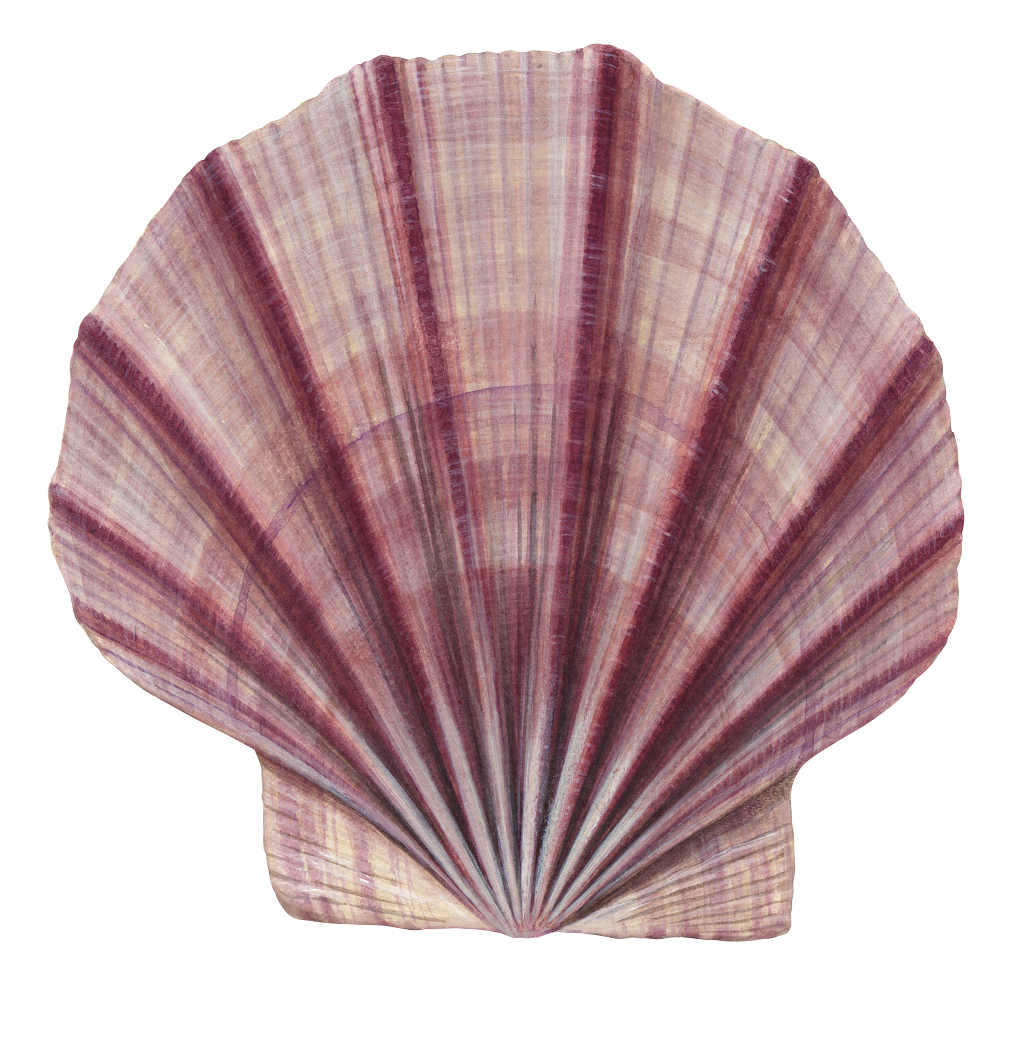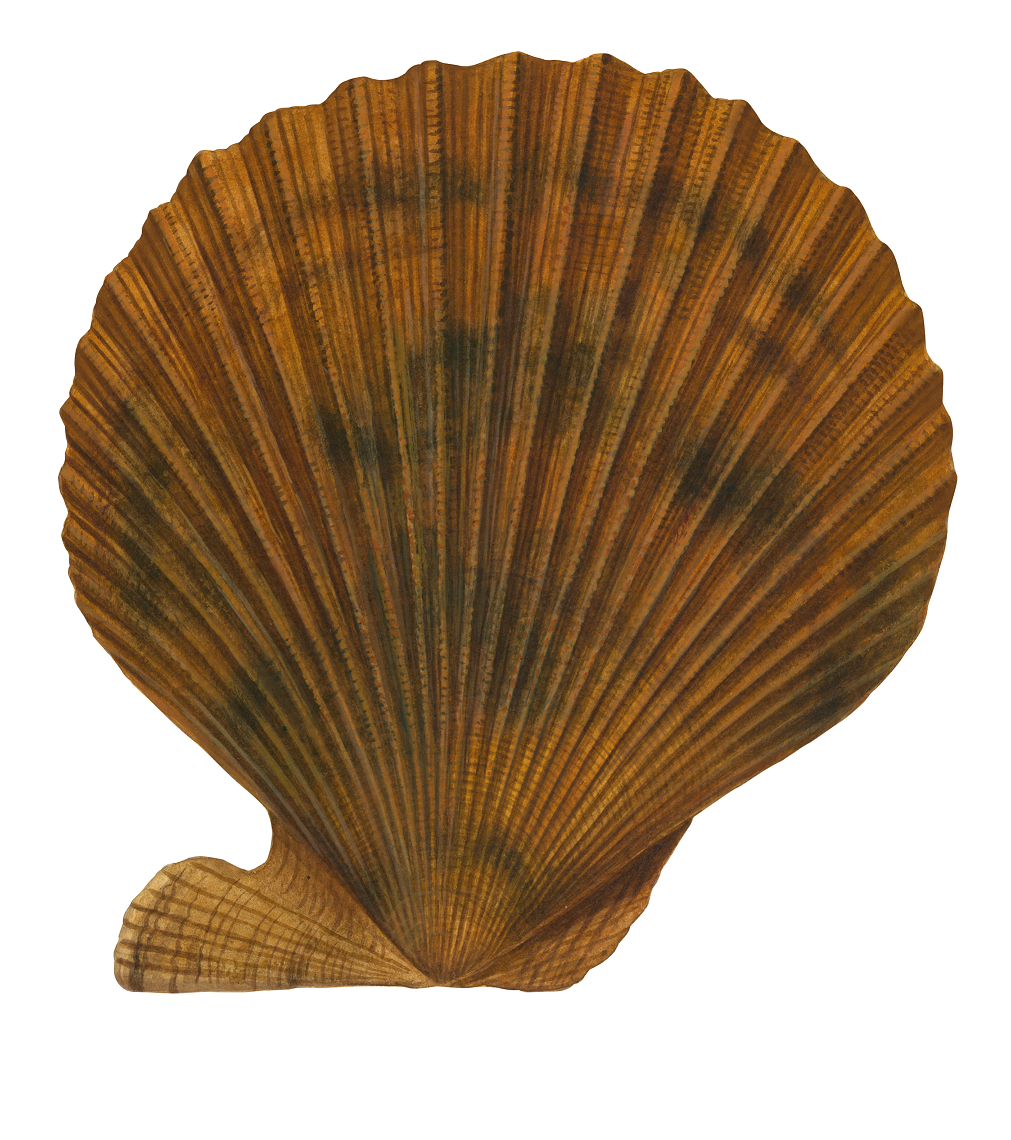Ecosystem and Habitat Interactions
By-Product
Fishers are only authorised to retain scallop species, so by-product only consists of queen (Equichlamys bifrons) and doughboy (Mimachlamys asperrima) scallops, of which very little is retained. Scallop fishers are required to record any retained by-product.

Queen Scallop (Equichlamys bifrons)

Doughboy Scallop (Mimachlamys asperrima)
By-Catch
By-catch in the recreational fishery are effectively nil as scallops are hand collected. Vessels usually anchor at dive locations but anchors are deployed on unconsolidated sediment so there is no concern with habitat interation.
By-catch impacts of the commercial fishery are low because volume is low and the majority of bycatch is returned alive and healthy. Common bycaught species are molluscs such as dog cockles (Glycymeris sp.) and the native oyster (Ostrea angas). Diogenid hermit crabs (Paguristes tuberculatus) and the introduced screw shell (Maoricolopus roseus) are also taken as by-catch. Below is a list of scallop bed species retained in commercial gear during two scallop dredge surveys conducted at White Rock in 2006.
| Category | Common Name | Scientific Name |
| Commercial Scallop | Commercial Scallop | Pecten fumatus |
| Bivalves | Doughboy Scallop | Mimachlamys asperrima |
| Queen Scallop | Equichlamys bifrons | |
| Mud Oyster | Ostrea angasi | |
| Mussel | Mytilus edulis | |
| Dog Cockle | Glycymeris striatularis | |
| Razor clam | Atrina tasmanica | |
| Other Molluscs | New Zealand Screw Shell | Maoricolpus roseus |
| New Holland Spindle Shell | Fusinus novaehollandiae | |
| Tulip Shell | Pleuroploca australasia | |
| Triton Shell | Charonia lampas | |
| Cowrie | Cypraea hesitata | |
| Pale Octopus | Octopus pallidus | |
| Southern Keeled Octopus | Octopus berrima | |
| Crustaceans | Hermit Crab | Strigopagurus strigimanus |
| Unidentified Hermit Crab | Unidentified sp. | |
| Spider Crab | Leptomithrax gaimardii | |
| Hairy Shore Crab | Pilumnus tomentosus | |
| NZSS Hermit Crabs | Unidentified spp. | |
| Seastars | 11-Arm Seastar | Coscinasterias muricata |
| Astropectinid | Bollonaster pectinatus | |
| Oreasterid | Nectria ocellata | |
| Urchins | Common Urchin | Heliocidaris erythrogramma |
| Pencil Urchin | Unidentified sp. | |
| Fish | Crested Flounder | Lophonectes gallus |
| Lachet | Lepidotrigla vanessa | |
| Shaw’s Cowfish | Aracana aurita | |
| Rays | Tasmanian Numbfish | Narcine tasmaniensis |
| Banded Stingaree | Urolophus cruciatus | |
| Other Species | Pumpkin Sponge | Unidentified sp. |
Threatened, endangered or Protected Species
Interactions with threatened, endangered or protected species (TEPs) are rare. There are low levels of interactions with sygnathids (seahorses and related species) observed, but these are usually released unharmed and interactions with sygnathid populations are limited. Given that most of the fishing effort takes place in habitats that are not generally favoured by sygnathids (i.e., sandy bottoms with low levels of habitat structure). Gear is towed at low speed so interactions with mobile protected species like seals, sharks cetaceans and seabirds are not observed.
Scallop fishers are required to record any interactions with TEPS. Fishers do not record bycatch caught in the dredge. Scallop fishers participating in state-wide surveys may make notes and observations about bycatch in log sheets, but this is not compulsory. For targeted surveys, where there are observers on board, the observers (IMAS or NRE Tasmania staff) may make some more detailed observations, including any interactions with TEPS, but the bycatch from each dredge tow is not quantified. More detailed collection of bycatch information during surveys should be considered, given that these are the only means of collecting this data for the fishery.
Ecological Interactions
Habitat interaction from the commercial fishery has been of some concern when gear interacted with sponge habitat. This problem has been addressed with the system of smaller spatial boundaries for beds opened in the TSF. This process takes account of sensitive habitats to ensure reduced gear interaction.



